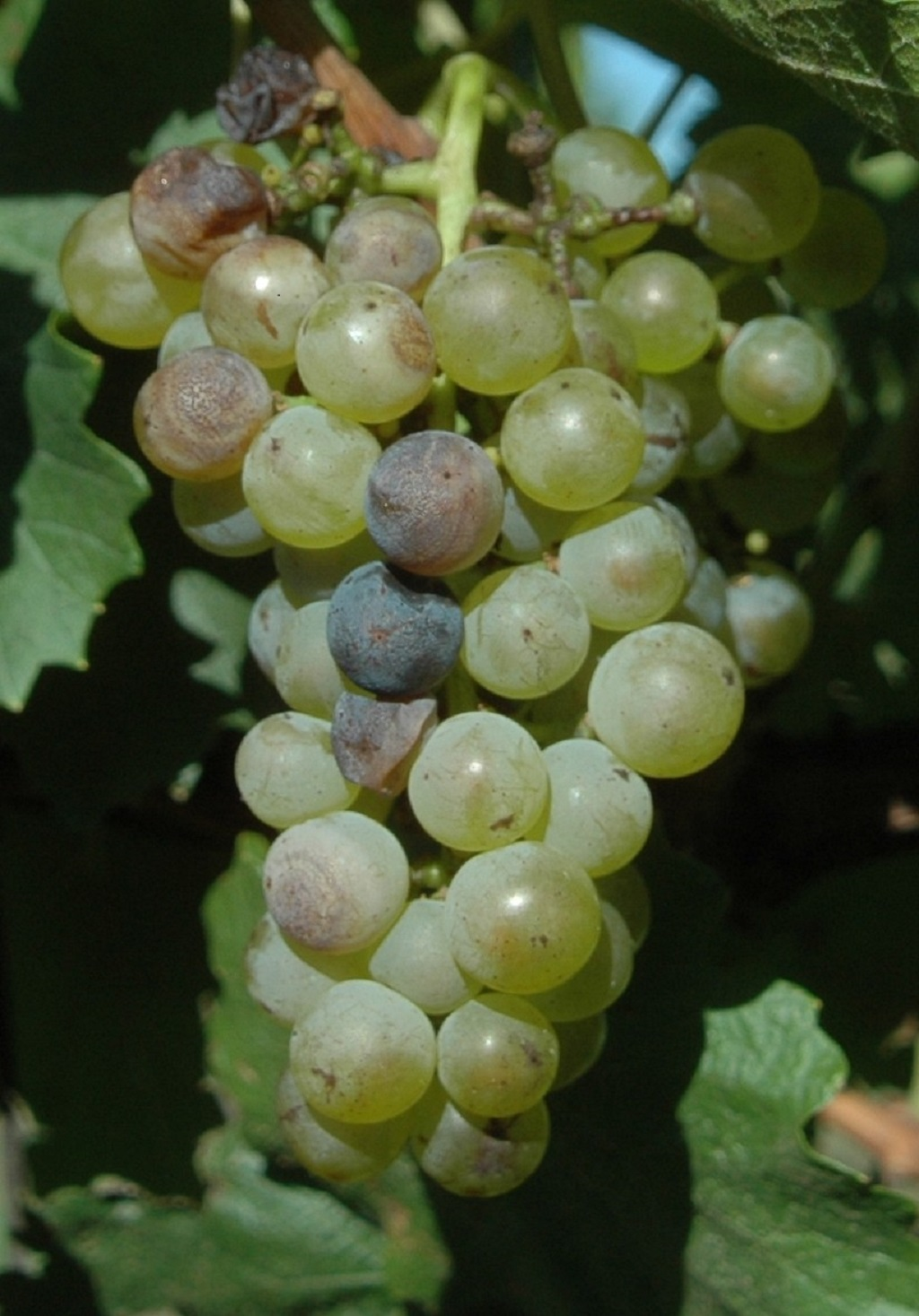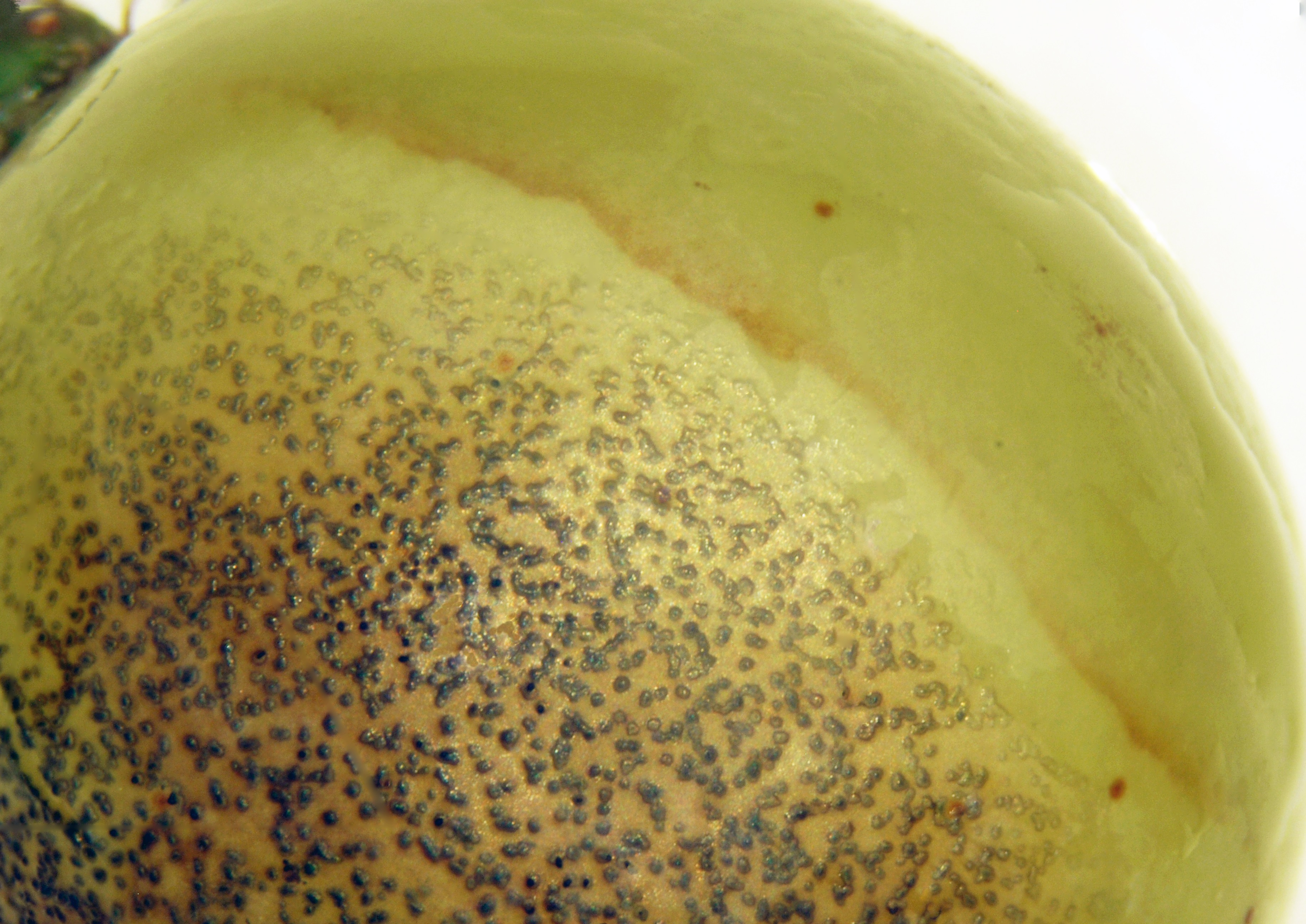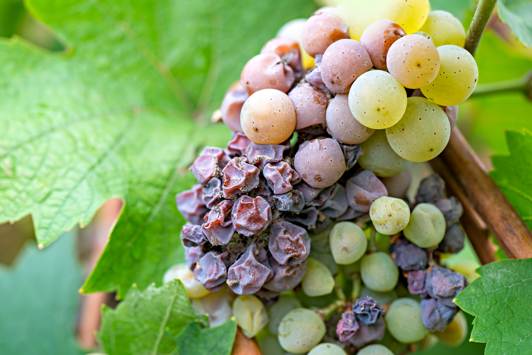
Bitter rot of grapes is a declared pest in WA
Bitter rot of grapes is not known to occur in WA and must be reported to the department if found or suspected to be present in WA. Early detection is critical to protect WA’s wine and grape growing industries.
About bitter rot of grapes
Bitter rot (Greeneria uvicola) is a fungal grape disease named for the bitter taste of the infected fruit.
The unpleasant flavour carries over into wine made from diseased fruit. This fungus is not known to occur in Western Australia.
Early detection and reporting of bitter rot will help protect WA horticulture, specifically grape growers and wine producers.
Bitter rot affects both wine grapes and table grapes.
- Bitter rot is most obvious on ripe fruit, post-veraison (colour change).
- Concentric rings made up of spore bodies eventually cover the entire berry, and white berries turn brown.
- Berries soften and detach easily from the bunch.
- Berries can become mummified.
- The fungus also causes dark flecks on the vine’s leaves, shoots and stems.
- Fruit symptoms can be confused with other bunch-rotting fungi.

Bitter rot infects grapes, causing them to turn brown, soften and possibly become mummified. The fungus reduces grape yield and spoils the flavour of fruit, wine and any other products made from infected grapes.
- The fungus overwinters on stem lesions, in grape mummies, and on plant debris.
- Spores are released during warm, wet weather and spread in splashing rain to all parts of the vine.
- The fungus invades fruit stalks (pedicels) and remains latent until the berry ripens.
- Full expression of bitter rot is favoured by temperatures between 22–35°C and high humidity.
Legal duty to report
Bitter rot of grapes is not known to occur in WA.
Greeneria uvicola (Berk. & M.A. Curtis) Punith (1974) is a declared pest in WA. under section 12 of the Biosecurity and Agriculture Management Act 2007.
This means that any person who finds or suspects the presence of bitter rot of grapes must report it to the department.
Western Australia's freedom from bitter rot is supported by general and specific surveillance and specific import requirements to prevent its entry.

